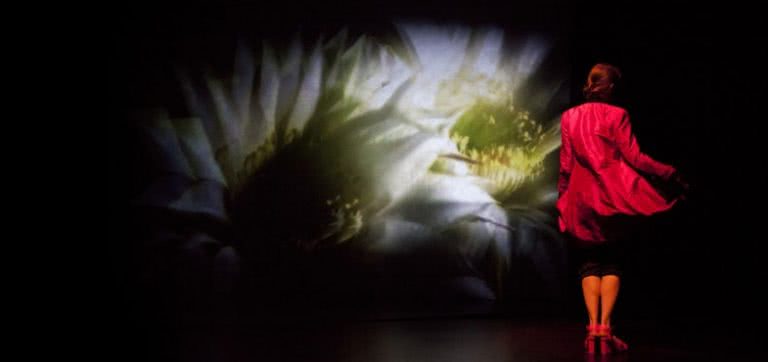The concept of stillness may seem odd in relation to the art of dance. Choreographer and performer Linda Luke will be challenging this idea, as well as exploring the concept of time in contemporary culture, in her latest piece,Still Point Turning. Presented by Form Dance Projects, the production will be hitting Riverside Parramatta later this week, and we caught up with Luke for a preview.
“I’d also call it an immersive installation, because it has a multimedia platform of videos, lighting, a rich textural soundscape and myself,” she explains. “The piece is fundamentally about time in contemporary culture, and the way we respond to how time has affected our lives. It also reflects on stillness. In juxtaposition to the fragmented, crazy culture that we live, it looks at that place of stillness that’s inside us.”
One of the initial inspirations for the piece was T.S. Eliot’s Burnt Norton, in which the poet explores similar themes to Luke.
“It’s one of those poems that I’ve sat and pondered about,” says Luke. “It is very much about the internal self and reflections on life. So I started working on the floor with it; extracting the images and developing dance in response to them.
“To quote Eliot, ‘At the still point, there the dance is’. I was really interested in that opposition between dance, which we perceive as movement, and still point. As a dancer, I move kinetically and I can move fast, but also in our practice, we look a lot at very minimal movement and unfolding it to see how that affects us in time and space,” Luke says.
“The multimedia platform came much later and by then the poem was sitting deep down underneath [the piece]. The audience won’t see T.S. Eliot in it at all; it’s far more my own point of departure. What they see more of is what time is for us in our contemporary culture. The feedback that I’ve gotten from the Melbourne Festival is that it made people reflect on how time affects us now.
“People have also said that it was a deeply immersive performance and they felt like they had gone on a journey. I think the piece does invite contemplation, rather than just being entertained.”
I can’t help but wonder if the utilisation of multimedia in the piece is a metaphor for our modern-day obsession with multitasking. I ask Luke about this.
“Yes, exactly. When we were looking at a space in the theatre we asked how the video, lighting and sound intercept with the dance to create an environment that’s not just about the body showing these kind of ideas. The aim is that the whole space gives the feeling of this world.”
Seeing as stillness and time are the central themes of the performance, it begs the question whether Luke is also commenting on how people are often too busy documenting their experiences and projecting them to be still and truly live life.
“I hadn’t quite thought about it in exactly those terms, but I think that’s really interesting what you say about documenting. We seem to want to always capture, but you can’t capture performance. That’s the special thing about it; it’s so ephemeral. You can only capture it in the experience and in your memory. The theatre creates a space where you can’t take the camera in. You have to put all of that aside for that little bit of time. And I think it’s more challenging for audiences now, because we’re so easily distracted.”
Still Point Turning is playing atRiverside Theatreon Friday November 28

































